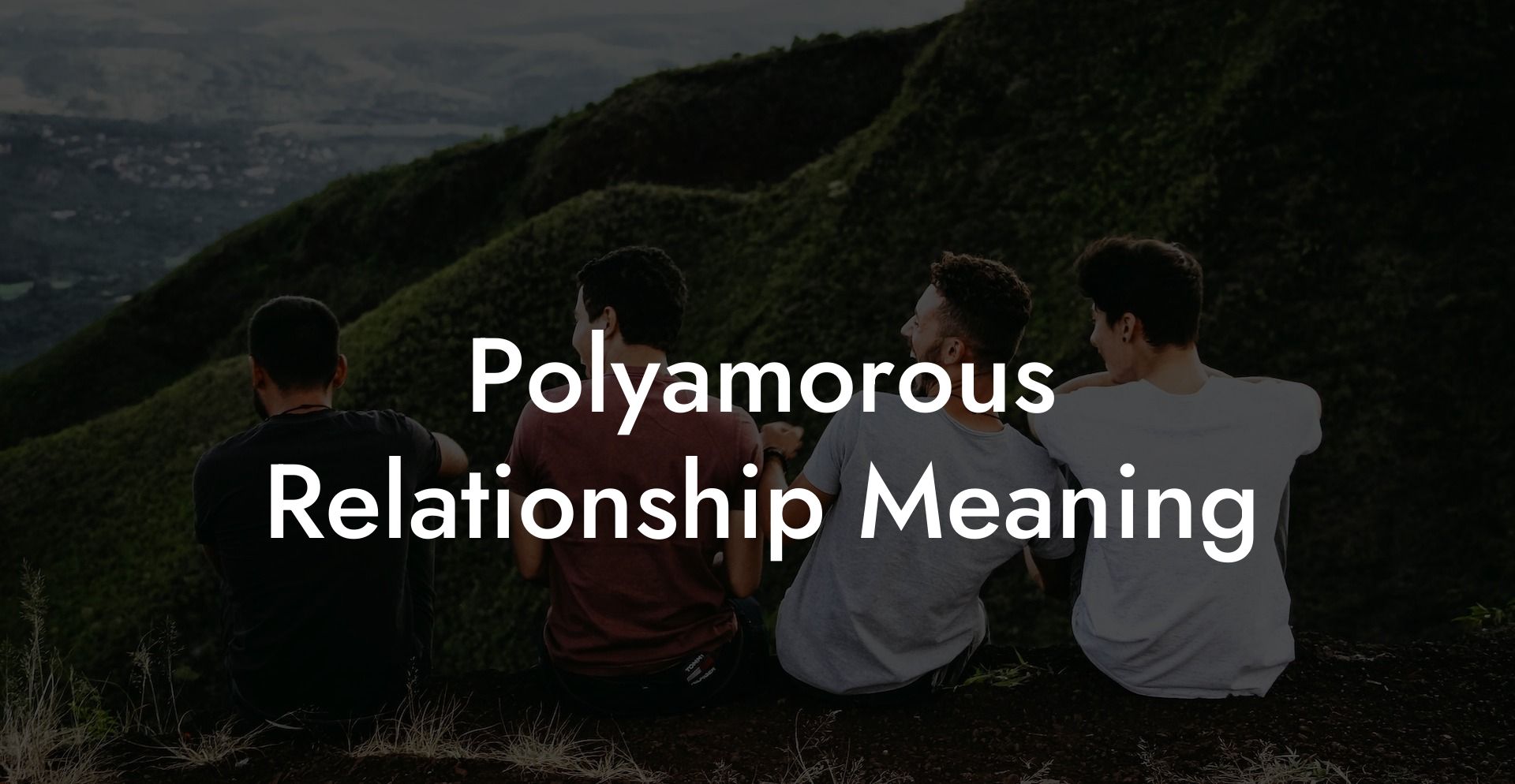In today's world, relationships come in various forms and structures. One such arrangement that has been gaining popularity in recent years is polyamory. But what exactly does a polyamorous relationship mean, and how does it work? In this article, we dive into the meaning of polyamorous relationships, the diverse forms they can take, and the potential benefits and challenges they bring.
Polyamorous Relationship Meaning Table of Contents
Defining Polyamorous Relationships
Polyamorous relationships are those in which individuals engage in loving, intimate, and committed relationships with more than one partner, with the consent and knowledge of all parties involved. This contrasts with monogamy, where individuals commit to a single partner exclusively.
Polyamory derives from the Greek word "poly," meaning many or several, and Latin word "amor," meaning love. Therefore, polyamory literally translates to "many loves" or "several loves." It's essential to understand that polyamory is about fostering deep, meaningful connections with multiple partners, not just casual sex or superficial relationships.
A Spectrum of Polyamorous Relationships
There is no single model for polyamorous relationships, as they can take various shapes and forms based on the people involved and their negotiated agreements. Here are some common structures of polyamorous relationships:
- Triads: A relationship involving three people who are all committed to each other equally. This can be a closed triad, where relationships are exclusive to the trio, or an open triad, where individuals can have additional partners outside of the triad.
- Quads: A relationship involving four people, which can be formed in various ways, such as two couples coming together or a triad including another partner.
- Vs and Ns: These configurations involve one individual having multiple partners, but their partners not being romantically or sexually involved with each other. The person at the center of the "V" or "N" relationship is often referred to as the "hinge" partner.
- Polycules: A term used to describe the complex network of relationships that can evolve in polyamorous connections. This can include any combination of relationships, such as triads, quads, Vs, or Ns, and each person may have multiple partners who also have partners of their own.
Benefits of Polyamorous Relationships
Polyamorous relationships can offer numerous potential benefits to those involved, such as:
- Diverse Emotional Support: Having multiple partners allows individuals to receive emotional support and fulfillment from different sources, reducing the pressure on one partner to meet all of their partner's emotional needs.
- Increased Communication: Navigating agreements and boundaries in polyamorous relationships encourages open and honest communication, fostering stronger connections among partners.
- Personal Growth: Engaging in polyamorous relationships can challenge individuals to examine their own preconceptions, insecurities, and fears, leading to personal growth and self-awareness.
- Expanded Support Network: Being part of a polyamorous relationship can provide a larger support network, leading to more emotional, practical, and social support from multiple partners.
Challenges of Polyamorous Relationships
While polyamorous relationships can offer many benefits, they also present unique challenges that need to be acknowledged and addressed:
- Time Management: Balancing multiple relationships and ensuring each partner receives equal care and attention can require substantial time management and organization skills.
- Navigating Jealousy: Addressing and managing feelings of jealousy and insecurity among partners is crucial for maintaining healthy polyamorous relationships.
- Societal Misunderstandings: Polyamorous relationships are still misunderstood and stigmatized in many parts of society, which can lead to judgment, discrimination, and challenges in sharing or explaining relationships with others.
Polyamorous Relationship Meaning Example:
Alice, Bob, and Carol are in a polyamorous triad. They started as a couple, with Alice and Bob being romantically involved. They met Carol, and all three of them fell in love and decided to form a committed triad. They navigate their relationship through open communication, setting boundaries, and ensuring that each person's needs are met. They also address and manage any feelings of jealousy or insecurity that may arise. While they face some societal misconceptions and judgments, they continue to educate themselves and others on polyamory and the diverse forms love can take.
Polyamorous relationships challenge, in many ways, the traditional concept of love and relationships. By embracing the diversity of love, those in polyamorous relationships can experience meaningful connections with multiple partners, helping them grow emotionally and break societal norms. If you found this article engaging and informative, please share it with others and explore other guides on The Monogamy Experiment. Together, let's continue to learn and grow in our understanding of relationships and love.













